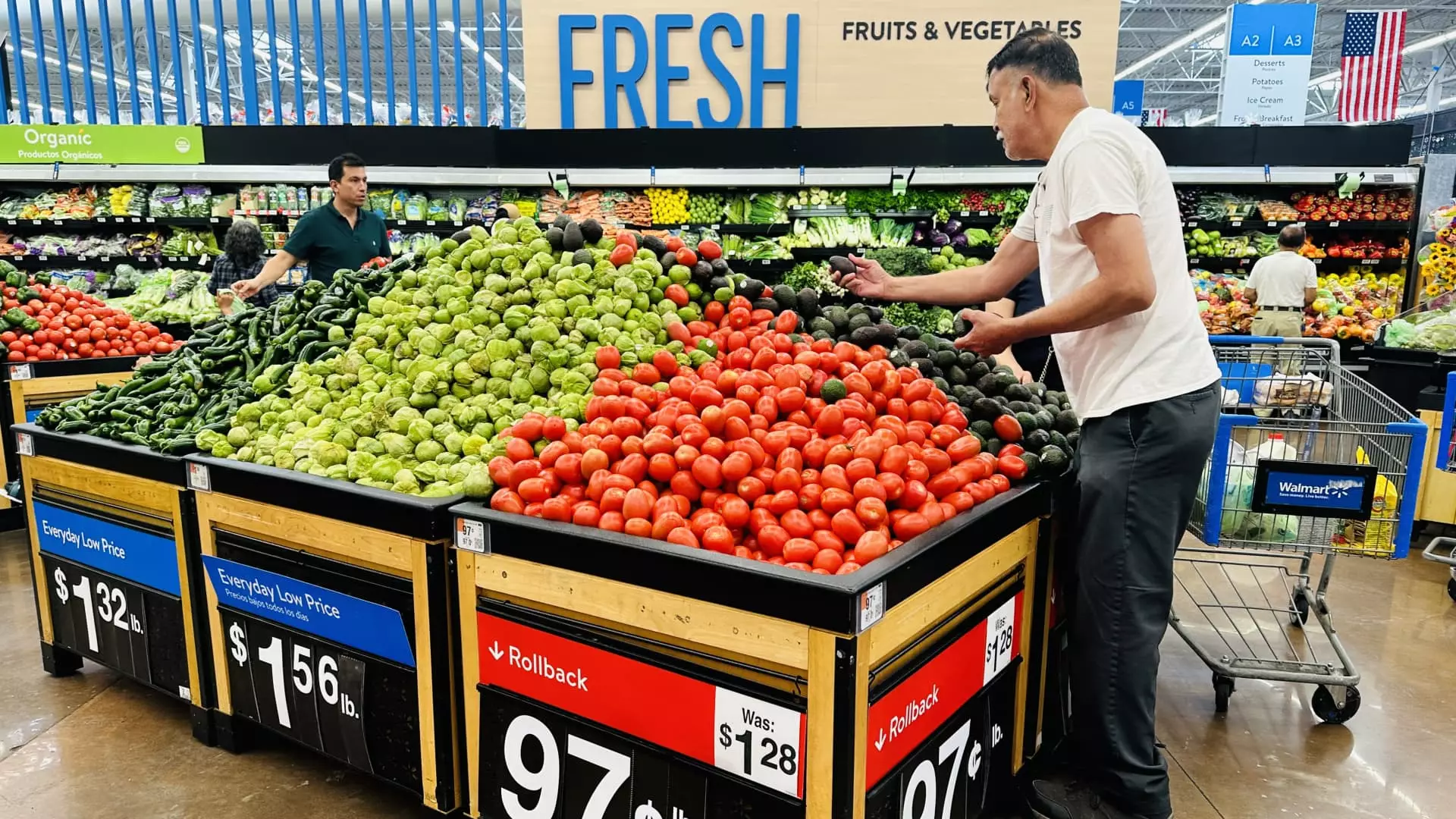In a landscape riddled with economic uncertainties, many Americans have turned to the Buy Now, Pay Later (BNPL) trend as a crutch for their financial struggles. Recent data from Lending Tree reveals a startling statistic: 25% of BNPL users are financing their grocery bills, a significant jump from previous years. This shift isn’t just a trend; it encapsulates a broader alarming reality where instant gratification is increasingly underpinned by mounting debt. By opting to buy groceries with BNPL, consumers are laying the foundation for a precarious financial future, and it raises the question—is this truly a solution or merely a band-aid over an ever-widening wound?
The allure of BNPL is undeniably strong. With its promise of zero-interest payments and the ability to break down costs into manageable installments, it has surged in popularity. However, this easy access to credit often obscures the lurking threat of financial mismanagement. Not only are people using these loans for luxuries, as we see at massive events like Coachella—with around 60% attending using BNPL—but they are now also resorting to this form of debt to secure essential necessities. This pattern is troubling, as it reflects a desperation that is hovering over the American consumer landscape.
Are We Living Beyond Our Means?
A concerning 41% of consumers reported making late payments on BNPL loans last year, a clear indication that what might seem like a benign financial decision can quickly spiral out of control. The slippage into delinquency isn’t merely a personal failing but a systemic issue that speaks volumes about the wider economic pressures facing households. As inflation persists and essential goods continue to soar in price, many find themselves in vicious cycles of borrowing to afford basic needs while simultaneously accruing late fees that exacerbate their situations.
The veneer of financial savvy may paint the use of BNPL as prudent, but the underlying reality begs to differ. Matt Schulz, Lending Tree’s chief consumer finance analyst, aptly notes that many consumers are simply looking for ways to extend their budgets. However, this mindset is fraught with peril. When nearly 60% of BNPL users admit to having multiple loans at once, it’s clear that this emerging trend has morphed from a useful tool into a potential ticking time bomb for personal finances.
The Illusion of Interest-Free Financing
What consumers often overlook are the hidden dangers that lie within those appealing BNPL agreements. Despite the ostensible lack of interest, late fees can be exorbitant, creating a steep cost for those who mismanage their finances. Schulz warns that while BNPL can help draw the line between living paycheck to paycheck, it also entices risk-taking behavior that leaves borrowers even further in the hole. Many users mistakenly view these loans as a free and easy way to buy immediate necessities, but they forget about the looming obligation that leads many into deeper debt.
In an environment where everyone’s looking to get ahead and maintain a semblance of normalcy, the willingness to finance everything—from concert tickets to perhaps even takeout meals—sets a precarious precedent. With major brands like DoorDash adopting BNPL options for food deliveries, we find ourselves confronting a new reality: Americans are becoming so overwhelmed by financial pressure that essential meals are being wrapped in layers of debt.
The Broader Implications for Society
The reliance on BNPL loans isn’t just an individual concern; it represents a societal trend that poses risks for collective economic health. Consumers need to tread cautiously, yet the siren song of immediate gratification often drowns out the sensible voices warning of tomorrow’s potential financial headaches. This obsession with instant access to funds without considering the long-term repercussions paints a picture of an economically vulnerable populace, one that’s increasingly reliant on unsecured debt to navigate daily life.
Our shift toward a debt-dependent society raises critical questions about the state of financial education and literacy among consumers. While financial institutions continue to offer these products as tools for financial flexibility, the risks should be highlighted more intensely, as they often lead to trap-like situations. Without a robust understanding of the potential pitfalls, consumers might blindly step into commitments they cannot manage, leaving them with what feels like quicksand beneath their feet.
In sum, while the innovation of BNPL can provide temporary relief in financial stress, it is imperative to recognize its inherent risks. The current trend reflects not just an economic shift but also a cultural one, where borrowing against future earnings becomes normalized. The consequences of this shift could be significant, further entrenching economic inequality and vulnerability among consumers who simply seek to fulfill their basic needs. As we continue navigating through this new normal, one must wonder: is it worth it?


Leave a Reply